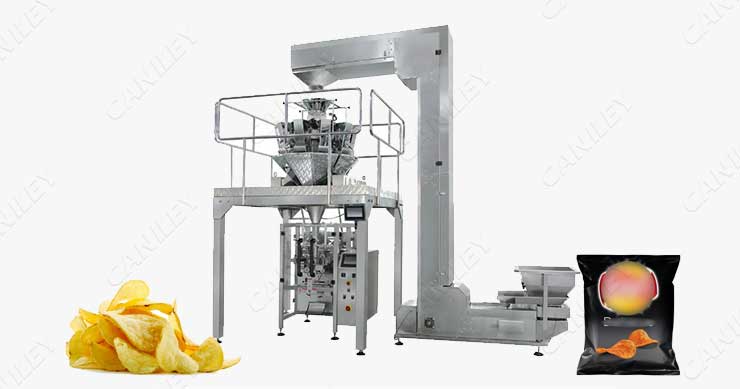Chips is a very popular snack, it contains many kinds, such ask potato chips, banana chips, cassava chips, etc.
So how chips are packed? Because fried products are brittle and fragile, the choice of packaging tools is very important. Usually, we will choose a multi-head weigher and flush nitrogen into the bag. This minimizes the loss of chips during packaging and transportation.
So why choose a multi-head weigher?
Let’s take an example:
For example, if a 10-head weigher is used for quantitative weighing compared to a general packaging machine, the same work is done:
- 10 head weigher are required, 1 operator is required, the speed is 60 bags/min, the error per bag is 0.3~0.5 grams, the total error is about 8 kg per day, and the total error is about 3 tons per year.
- Generally, 5 electronic scales are required, 5 operators are required, the speed is 12 bags/min, the error of a single bag is 2 grams, the total error is 57 kg per day, and the total error is 20 tons per year.
Obviously, using a 10-head weigher can save the factory 4 labors and 17 tons of raw materials every year.

Why flush nitrogen?
As a high-fat food, chips are prone to oxidative deterioration once they come into contact with the air. Filling with nitrogen can discharge the oxygen in the bag, effectively prevent oxidation, and also effectively prevent the chips from becoming soggy. Moreover, during transportation, extrusion can be prevented, the breakage of chips can be reduced, and transportation costs can be reduced.
How chips are packed?
- Install the packaging film on the packaging machine according to the packaging requirements of chips.
- Adjust the packaging mouth according to the film width and product size, and start the machine after the rectification is completed.
- Adjust the speed of the packaging machine according to the speed at which the product is conveyed.
- Put the chips into the feeding port and transport it to the packaging machine.
- The bag making, filling and sealing are automatically completed by the machine.
- Finished product output.
